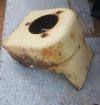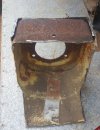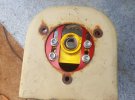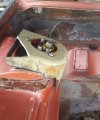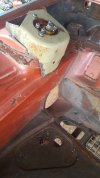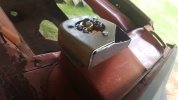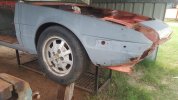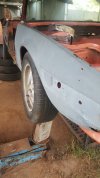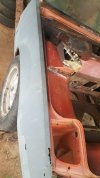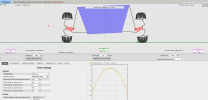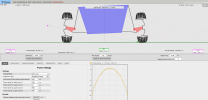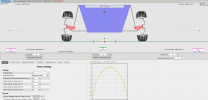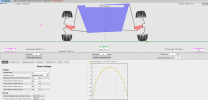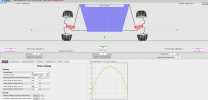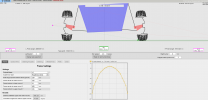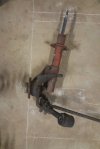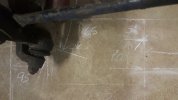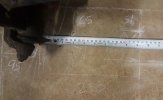Steve Hoelscher
True Classic
Steve, I did the work on my X1/9 before there was reasonably priced suspension modeling software available. The work I did with the X1/9 was done the old fashioned way. I started with a spread sheet for wheel rate modeling then as I got deeper into the chassis itself to determine roll ratios.
To figure out geometry, I used the illustrations in the work shop manual to make up a drawing that I could use to determine roll center heights and camber gain/loss. Actually making the drawings taught me a lot about what I was doing.
So I don't have models and I never got to the point of working out the relationships between strut inclination, camber curves and roll center heights. That I learned working on some of the production based GT cars I worked on. It was easy to migrate that knowledge over to the MR2 using Susprog3D (which by the way is an Australian product). While I lack specific data I can tell you that you can't move the struts too far inboard without modifying the strut towers. I would max out the available space and adjust camber at the upright/strut mount.
I don't suggest adding any additional caster, front or rear. The factory setting is 6 degrees which works very well. That's considerably more than is typical of production cars (3 to 4 degrees is pretty typical). There is an effect of caster called "trail", the distance between the steering axis intersection with the ground and the tire's contact patch, which gets exponentially longer as caster is increased. Increasing trail slows down the car's turn-in, or response to initial steering inputs. So there is a tradeoff. The rear has a similar, although greatly reduced, effect.
In the rear, use the same strategy for strut inclination and camber. You will find that the car will always need more rear grip so maximizing footprint is key to maximizing rear mechanical grip.
As for springs, have you tried sourcing used coil-over type springs? I would assume there is an online marketplace for used racing equipment and parts in Australia. There are lots of them here.
To figure out geometry, I used the illustrations in the work shop manual to make up a drawing that I could use to determine roll center heights and camber gain/loss. Actually making the drawings taught me a lot about what I was doing.
So I don't have models and I never got to the point of working out the relationships between strut inclination, camber curves and roll center heights. That I learned working on some of the production based GT cars I worked on. It was easy to migrate that knowledge over to the MR2 using Susprog3D (which by the way is an Australian product). While I lack specific data I can tell you that you can't move the struts too far inboard without modifying the strut towers. I would max out the available space and adjust camber at the upright/strut mount.
I don't suggest adding any additional caster, front or rear. The factory setting is 6 degrees which works very well. That's considerably more than is typical of production cars (3 to 4 degrees is pretty typical). There is an effect of caster called "trail", the distance between the steering axis intersection with the ground and the tire's contact patch, which gets exponentially longer as caster is increased. Increasing trail slows down the car's turn-in, or response to initial steering inputs. So there is a tradeoff. The rear has a similar, although greatly reduced, effect.
In the rear, use the same strategy for strut inclination and camber. You will find that the car will always need more rear grip so maximizing footprint is key to maximizing rear mechanical grip.
As for springs, have you tried sourcing used coil-over type springs? I would assume there is an online marketplace for used racing equipment and parts in Australia. There are lots of them here.

